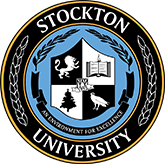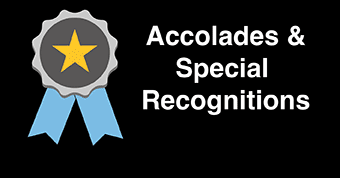Developing & Teaching Accelerated Courses
Accelerated Course Design for Summer, Winter, or Sub-term Sessions
Teaching in an accelerated format requires more than fitting 15 weeks of learning into 5 or 7 weeks. An accelerated course requires faculty to design the course with intention and purpose. Using backward design is critical to teaching and learning in a compressed schedule. Backward course design encourages us to focus on the essential student learning outcomes that can be reasonably achieved in the time provided for the course. When building or converting a course, explicitly and clearly define the knowledge, skills, and attitudes students must achieve to demonstrate mastery of course content. When determining desired student learning activities and assignments/assessments use a tool to realistically estimate student workload. Don’t forget to consider your workload too!

Key Principles to Keep in Mind:
- Less is more: Focus on essential learning activities
- Be clear and consistent: Explicit expectations and time estimates keep students on track.
- Design for flexibility: A predictable structure with built-in adaptability supports student success.
- Make adjustments: Collect feedback frequently and refine aspects of the course as needed.
This webpage is designed to help you explore strategies, instructional tools, and best practices for developing a successful accelerated course.
Best Practices for Developing & Teaching a Successful Accelerated Course
Write specific, measurable student learning outcomes. Based on the student learning outcomes, categorize your course content based on how essential it is to achieving learning objectives. This represents a strategic way to ensure student success and maintain course rigor in an accelerated course. Your student learning outcomes and course content will be communicated to students with a well-developed syllabus.
Critical Content
- Consider the prerequisite knowledge students need to be successful in the course.
- Address foundational concepts required to meet student learning outcomes.
Need to Know Content
- Consider learning that is less urgent now, but may be critical for subsequent learning needs.
- Identify content that will be addressed later in the course without harming student learning progress at the start of the course
Additional Content
- Consider eliminating content that adds depth or interest but is not essential to achieving student learning outcomes or provide the content in an optional resource section for students with the time and interest to explore.
- Organize and combine course topics/learning activities in a manner where content is aligned to the course’s student learning outcomes. The CTLD course mapping tool may assist in this process.
- Compress content to the length of the semester without compromising clarity or rigor. Note: some courses are not suitable for an accelerated format.
- For unit topics and activities that are typically challenging for students, reduce workload accordingly.
- When working around holidays and other aspects of a compressed term, consider offering asynchronous methods to teach and promote student collaboration and learning opportunities (a recorded Zoom lecture, using technologies to meet and discuss projects with other students, flexible office hours, etc.).
- Clearly outline course topics and activities in the course syllabus.
- Be pragmatic and consider the kinds of activities and assessments that are practical and able to be completed during an accelerated course. Having multiple small assignments that provide consistent and regular feedback aides student learning. Having rubrics or other methods to quickly and easily provide feedback helps to make your workload more manageable too!
- A multi-component group project that works during a 15-week semester may not translate well in a compressed term. Demonstrate effective teaching by providing learning activities and assessments that require application and consideration of authentic real-world issues instead of memorization or knowledge recall.
- Provide clear, organized assignment/assessment guidelines and deadlines in the course syllabus and on Backboard. Consider flexible deadlines that permit you to more evenly distribute your grading workload.
Schedule an appointment with CTLD staff to discuss innovative activities and assessments for your accelerated course.
Provide students with 24/7 access to the course syllabus, earned grades (Grade Center - Original | Gradebook - Ultra), and course materials by designing an organized Blackboard course. Blackboard (Original | Ultra) is the learning management system supported by Stockton and offers students an important central location to access important information about your course. Students with accessibility needs have a suite of tools available with Blackboard Ally that promote learning. You can use Blackboard to email (Original | Ultra) all of the students in your course, make announcements (Original | Ultra), submit assignments (Original | Ultra), and much more. Be sure to view the Blackboard tutorials and contact the CTLD for additional assistance or innovative ideas for setting up your Blackboard course.
- Utilize practices for effective teaching, active learning, high-impact practices, and more found here.
- Send your students an e-mail just prior to the start of the semester that includes the course syllabus with explicit instructions on how and where your course will meet (in-person or online), along with textbook information. Stress the importance of having required textbooks, access to readings, logging into Blackboard, etc., to your students to complete assignments due the first week of the course.
- Create tasks/assessments for students that begin on day one of the course with assessments that are due during the first week.
- If teaching an online asynchronous course, require students to log in to Blackboard every day to "check in". Make sure there are assignments/assessments that will require students to log in to the course on a daily basis.
- Use consistent, synchronized days and times to send announcements, due dates, etc. Getting students in-rhythm with course material and deadlines can help students succeed.
- Utilize Blackboard's assignment tool for students to easily submit assignments and the instructor to be able to review student writing and assign grades.
- Make sure to add the Grade Book in each of your Blackboard course sections; prompt grading of student work will keep it up-to-date and accurate. Let your students know where and how to access it in your course.
- Blackboard and other methods may be employed to communicate regularly with students. In an accelerated course, frequent reminders of deadlines, required course activities, and expectations are critical to student success. Using Blackboard, you can automate many of these tasks.
- The Blackboard Retention Center can notify you about students who are falling behind and permit intervention before it is too late.
- Consider a weekly email outlining activities for the week.
- Provide office hours and other methods for students to seek rapid clarification about course activities and assignments.
- Let students know your preference for being contacted and how long it may take to receive a response.
- Provide a welcome/introduction video or message about you and the course. Be explicit in explaining to students the heavy workload of an accelerated course and share the amount of time students will need to devote to the course to be successful.
- Be sure to use available Stockton resources to support and assist students with needs that may arise.
For additional information or assistance with an accelerated course, contact the CTLD at ctld@stockton.edu or call 609.626.3828 or schedule an appointment.


